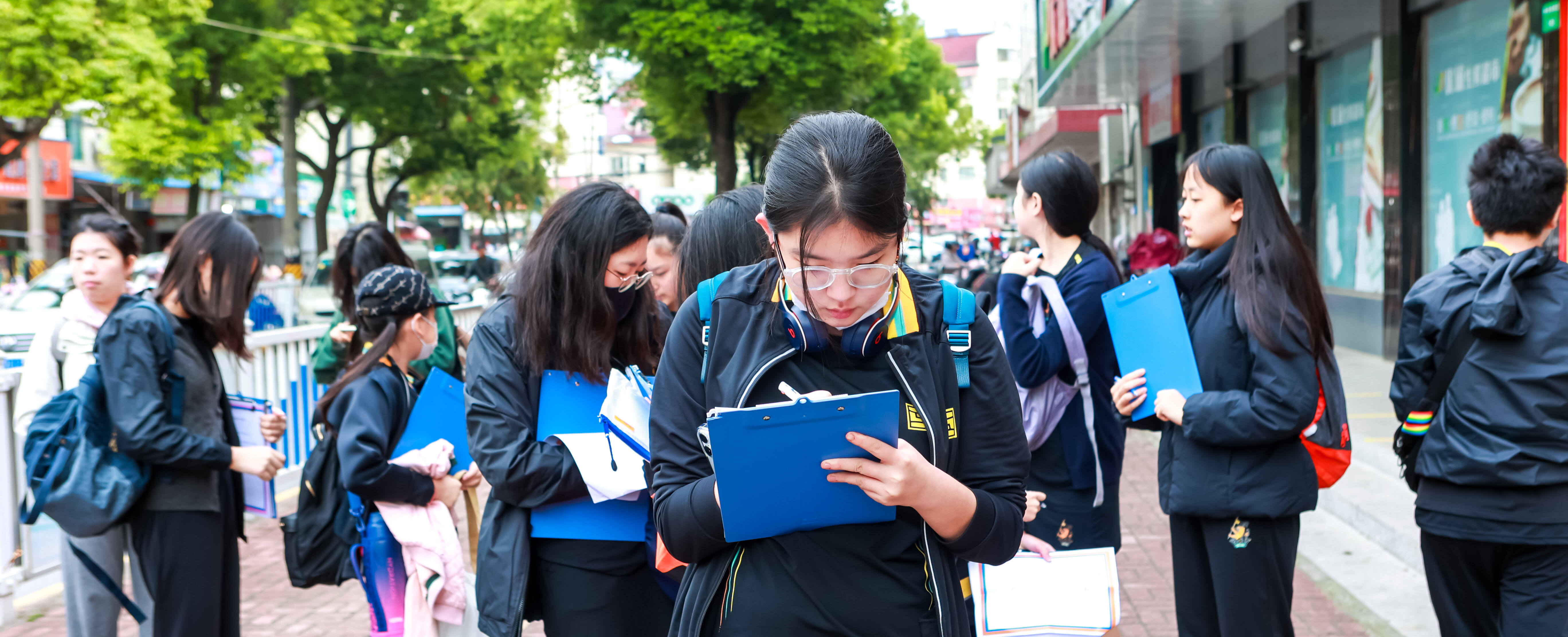In the first instalment of this series, we shared two aspects of experimentation — demonstrations and manipulating.
Demonstrations can attract pupils’ attention and motivate their interest in learning. They also help to explain
scientific principles and deepen pupils’ understanding and memorising of theoretical knowledge. Many experiments are
not suitable for all pupils (particularly pupils in the lower grades) to do by themselves, due to high safety
requirements. Accordingly, teachers will make the best use of every opportunity to design hands-on experiments for
them while ensuring that all operations remain safe. Hands-on experiments can strengthen pupils’ safety awareness and
manipulative abilities while familiarising them with the usage of different apparatus. They can also stimulate them to
think and discuss, subsequently developing their problem-solving abilities.
In this article, we will introduce a further two aspects of experimentation – scientific inquiry and engineering
design.
Scientific Inquiry
In the manipulating process, pupils do not need to collect or analyse data. They also do not need to construct or
verify a hypothesis. The third aspect of experimentation helps pupils to transfer from doing qualitative experiments
to quantitative experiments, which enables them to become independent researchers by learning and practising methods
of scientific inquiry.
Scientific inquiry is highlighted in the Science Curriculum Standards of Compulsory Education, updated in 2011 by the
Ministry of Education and the Science Curriculum Standards of Shanghai city. Both versions pointed out that scientific
inquiry is a required aim of pupils’ study as well as an important teaching method. In British national science
standards, the concept of “working scientifically” was proposed, emphasising that pupils should be provided with
sufficient training related to gaining a scientific attitude, as well as a familiarity with experimental techniques,
assessments and measurements.
The method of scientific inquiry has been refined over the course of the development of several modern scientific and
technological revolutions. A typical process of scientific inquiry includes the following eight steps:
- Raise a question that comes from daily observations or previous research by other scholars
- Do background research
- Construct a hypothesis and prediction
- Test with an experiment
- Collect and analyse data
- Draw conclusions
- Verify hypothesis or modify it accordingly
- Communicate results
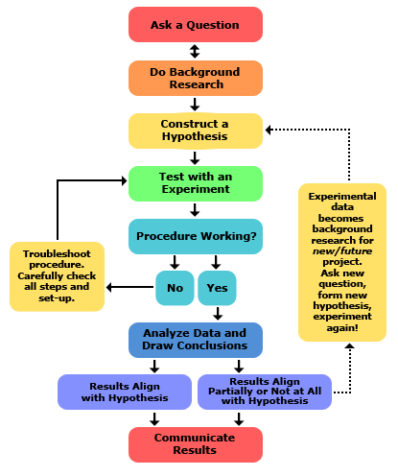
In the process of constructing a hypothesis, we need to define independent and dependent variables and invariants to
guarantee the fairness and accuracy of the experiment. Control groups should also be determined. In the process of
designing experiments, besides considering experimental materials and procedures, we need to assess risks before putting
forward safety precautions. When we collect data, we need to average our repeated measurements to avoid experimental
errors. When it comes to communicating results, it is important for us to appreciate peer review and supporters of our
research work. Finally, we must think about what to do next.
When we began to teach methods of scientific inquiry, classic cases proved a wonderful starting point to familiarise
pupils with the whole process. Pupils explored the classic case: “Which paper column can hold the most weight?” by
themselves. This case includes all elements of scientific inquiry even though it is simple. The process and results of
inquiry were presented on display board, which became a template for their independent inquiry.
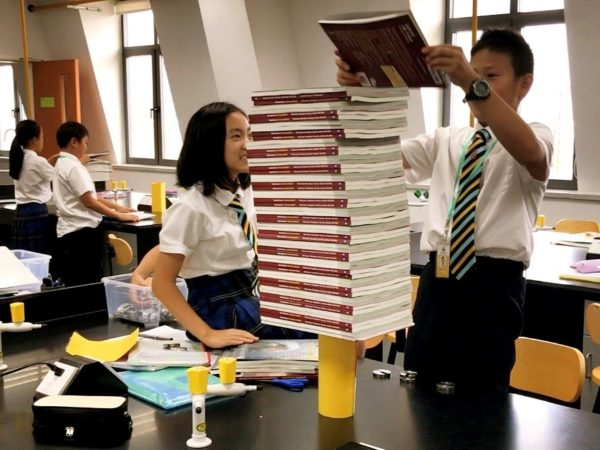
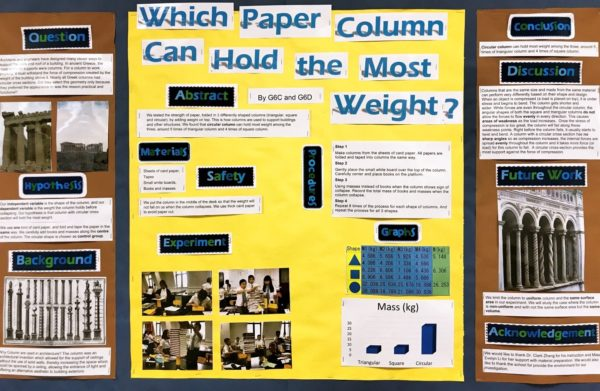
After pupils finished studying the classic case, they participated in more scientific inquiry activities under the
guidance of their teachers, such as finding the connection between the splatter area and free-falling distance of a
‘blood drop’, how different ways of heating affects Bunsen burner flames and the cooling effects of dry and wet
surfaces.
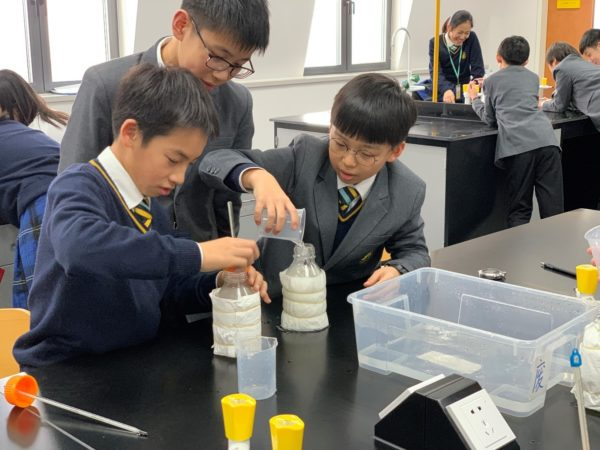

Considering that pupils were now familiar with the inquiry process, they were free to choose topics, prepare
materials, design experiments and conduct independent research. Our first science week served as an ideal opportunity to
exhibit their research findings, during which they thoroughly developed their collaborative abilities, public speaking
skills and their use of technical scientific terms.
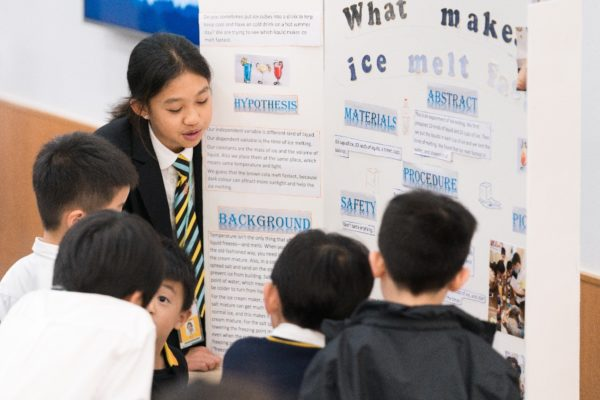
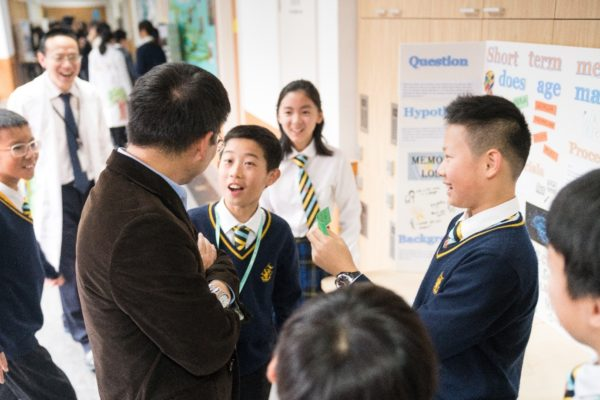
Scientific inquiry is based on grasping solid scientific knowledge. Without it, pupils will lack the essential
foundations necessary to support them, similar to a river without a source or a tree without roots. If this concept is
introduced to pupils too early, the result may be just opposite to what we hope for. According to our observation, grade
4 pupils already understood the concept of scientific inquiry after their frequent exploration. For example, a pupil
investigated the problem: “Is magnetic force stronger in air or in water?” Her display showed her clear understanding of
the concepts of safety precautions, control groups and averaging multiple measurements.
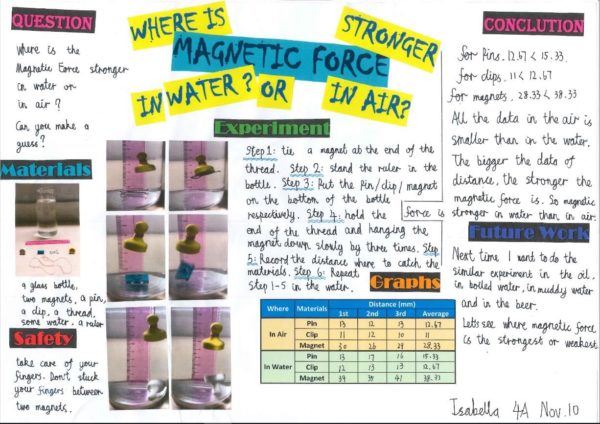
Engineering Design
In their independent scientific inquiry, one group chose the topic: “how the size of a parachute affects its time of
landing”. In the initial experimental design, their parachute was made of plastic bags, which resulted in the problem
that most of the time, the parachute could not maintain the shape of an ‘umbrella’. The plastic parachute took on
strange shapes under the influence of the wind. The strings connecting the four corners of the parachute to a hanging
block were also too loose. Under such circumstances, it was impossible for pupils to find any rules related to the
landing time, which became the negative data in their scientific inquiry. In the experimental process, technical
difficulties often occur, which need to be tackled with another kind of thinking pattern.
Scientists put forward a hypothesis and then try to verify whether the result aligns with the hypothesis and finally
conclude their scientific theories. For engineers, they need to solve a certain ‘problem’ via practical solutions whose
effectiveness will be tested. Engineering design also follows a set of basic steps, which have both similarities and
differences with the steps of scientific inquiry. This approach may be used to process problems in the engineering field
as well as those in scientific inquiry.
Eventually, the group cut pieces of cloth with greater air permeability to make a more suitable parachute. They also
used straws to prop up connecting strings and adjusted the weight of the blocks. After these design changes were made,
an affinity between landing times and the size of the parachute clearly existed, enabling pupils to finish the inquiry
successfully.
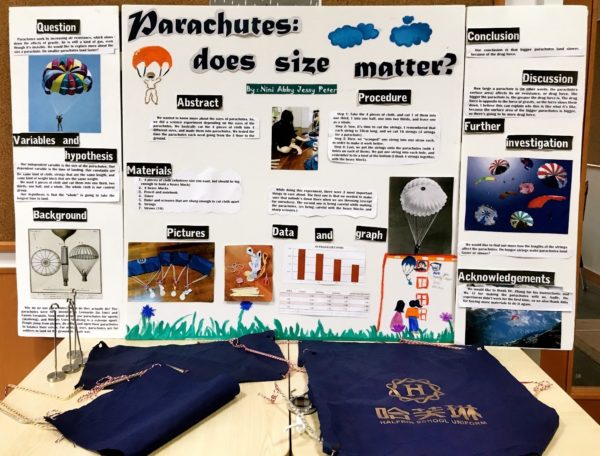

In 2013, the Next Generation Science Standards were published in America. The standards regarded science and engineering
practices as one of three dimensions and determined that engineering design was equally important as scientific inquiry.
It also advocated that pupils should learn engineering design at an early age. The fourth aspect of experimentation is
to handle problems with engineering design thinking. We endeavour to teach pupils to become scientists who are also
proficient in engineering.
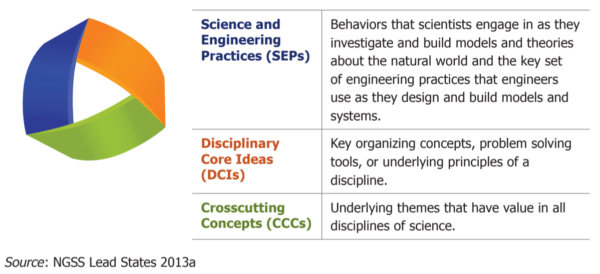
At Hiba, we create innumerable opportunities for pupils to practise their engineering design thinking:
folding a paper airplane to give it the longest flight distance and highest accuracy; making a paper crane with the
longest jib; constructing the highest building that can support a certain weight with a limited amount of macaroni and
length of tape; wrapping an egg with limited cushioning materials to avoid its shattering when it is in free fall. All
of these projects demand pupils to be creative while testing different solutions and using limited resources to cope
with technical problems.
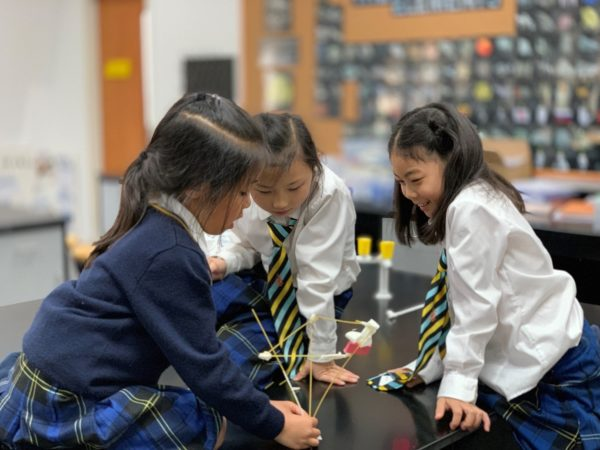
We have also established our First Lego League, which allows team members to conduct scientific inquiries
based on the theme of each year. They design, build and program a robot using Lego Mindstorms EV3 kits, then they
complete different tasks on a standardised playing field. It is an all-round competition combining scientific inquiry
and engineering design. We will gradually introduce more ‘First’ programs, including ‘First Tech Challenge’ and ‘First
Robotic Competition’ to pupils when they are ready for more challenges of this nature.

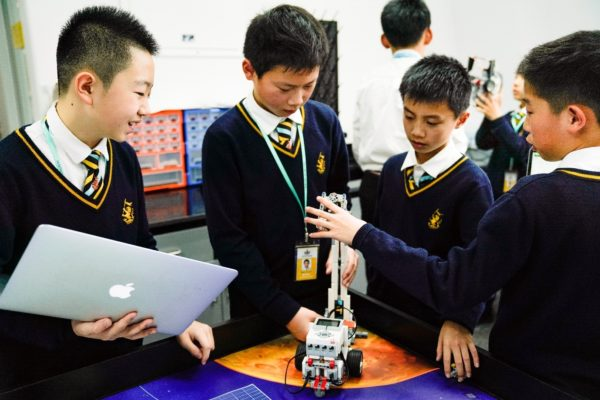
“Eureka!”
In 2009, an Indian movie 3 Idiots made a big splash in Chinese education circles. In one scenario of the movie, the
daughter of a professor goes to the hospital to give birth, but the rain starts to pour down and the roads are blocked
because of the bad weather. The professor is at a loss when they are trapped in such desperation. Rancho, a leading role
who acts as an undergraduate in the movie, consults a doctor how to deliver a baby via a video call. However, the
pregnant mother has collapsed and they need a vacuum chuck to help her to give birth. What’s worse, heavy rain causes a
power cut at the university. Under such desperate circumstances, Rancho uses a converter he invented, utilising
batteries and electric wires in the car to generate electricity, and makes the chuck by using a soft dust collector.
Finally, he helps the mother deliver the baby successfully. The movie, starring Aamir Khan, encourages us to reflect on
our understanding of science as a whole.
In the summer of 2018, 12 Thai youth soccer team members and their coach were stranded in a flooded cave. Elon Musk,
dubbed “Iron Man”, required only 24 hours to invent an “escape pod” and “mini-submarine” expected to be used for
rescuing. While these designs weren’t actually utilised during the rescue, their incredibly quick design and production
time highlights the importance of having an engineering mindset to ensure high efficiency.
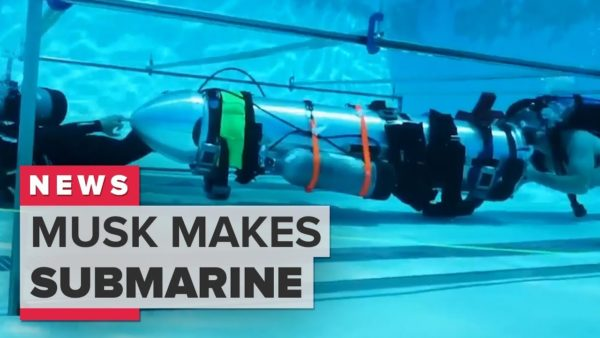
As the Chinese proverb goes: “The journey of a thousand of miles begins with one step.” Pupils should keep
learning scientific knowledge while developing their ability to utilise practical methods and materials. Naturally, they
will quickly become able to undertake systemic scientific inquiries and even make efficient engineering designs. One
day, they may embrace their own “Eureka!” moments, becoming heroes by solving important problems and perhaps even help
save the world!
All of these journeys begin with the phrase “We did experiments!”
Last Issue
